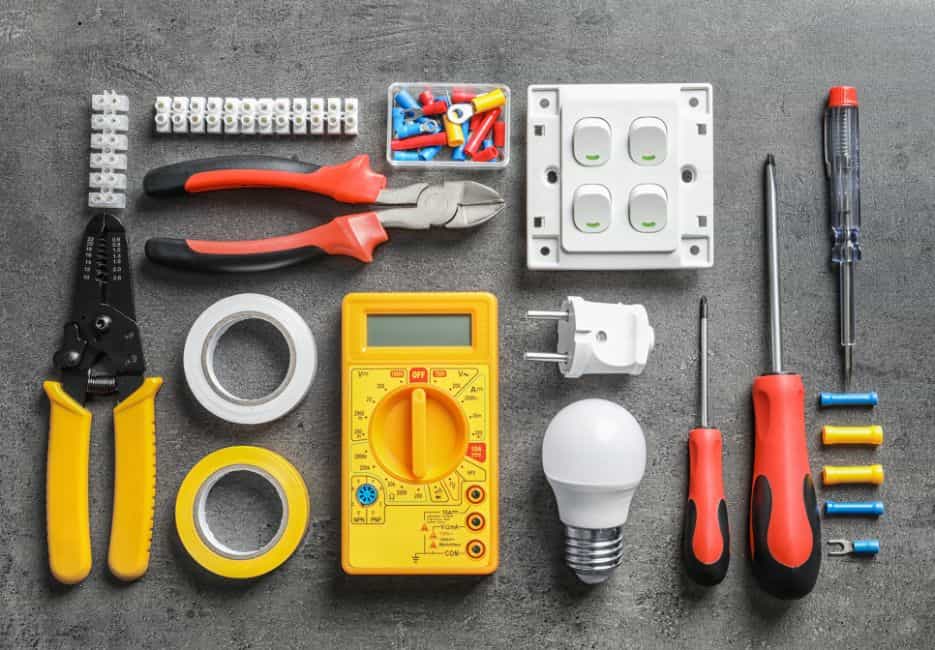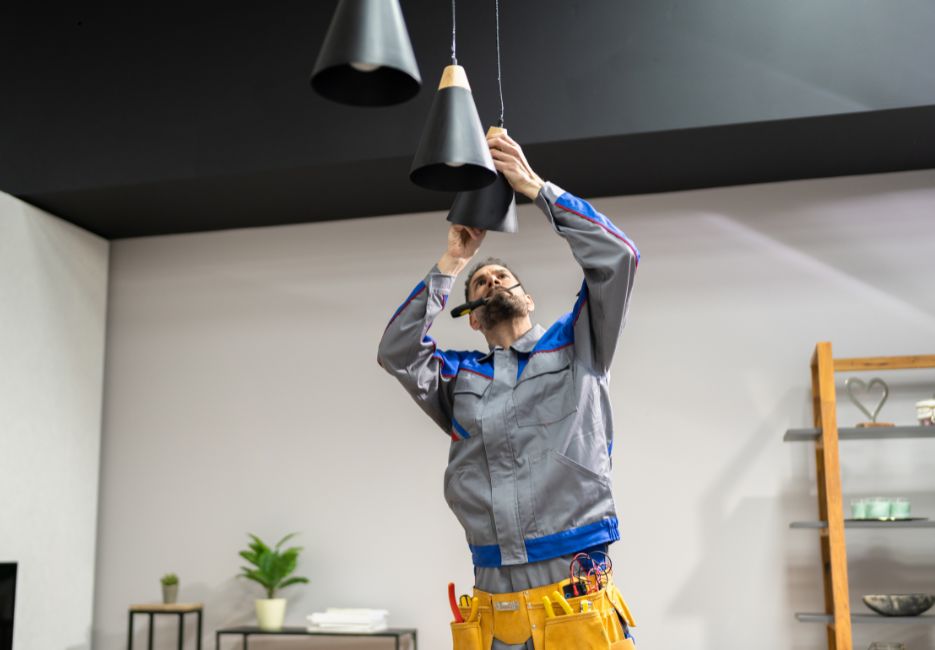Pendant lights are decorative and practical presents to any home, and by acquiring the knowledge of how to wire them up yourself, you can save a considerable amount of money. Besides, you can customize your lighting setup to your heart’s desire.
Here, I will talk about all the how-tos of wiring a pendant light which includes the procedure to be taken step by step right from assembling the tools and material to be used up to resolving prevalent issues. So let us move on and dazzle your room with a pendant light that is appealing!
Tools and Materials Needed

First and foremost, one thing that needs to be remembered before you even attempt to wire your own pendant light is that you have to gather all the necessary tools and other materials. These are the following things you will need:
- Wire stripper
- Phillips and flat-head screwdrivers
- Wire nuts
- Electrical tape
- Pendant light fixture
- Mounting bracket (if not included)
- Voltage tester
Step-by-Step Guide to Wiring a Pendant Light
Step 1: Turn Off Power
Created by this section (Section 1), and also your greatest priority, safety requirement is checked by you when you turn off the electricity that goes to the walls in the area where you start to work by the power on the circuit breaker.
Step 2: Remove Existing Fixture (if applicable)
By using the voltage tester, you would check that the light would not receive any electricity when you take off the old light fixture slowly. Then doing it by unscrewing it from the mounting bracket and disconnecting the wires.
Step 3: Install the Mounting Bracket
Fitting the mounting bracket that came with the pendant light to the ceiling box using screws. Make sure it is securely fastened.
Step 4: Prepare Wires
Get a knife and strip off about ¾ inch of insulation at the ends of the wires both on your pendant light and the ceiling wires (usually the black, white, and green or bare wires). The final touch is to make sure you have the exposed copper for a foolish connection.
Step 5: Connect the Wires
Black Wire (Hot): Time for a change-The ceiling (during the transition from the wires) you would tie the black with the white (Ancestor of the current) in a pilot relationship with the new pendant lamp- you will cross the black wire from the ceiling with the new one-then you will see that the first can be drawn right out of the glove box. It climbs up along the ceiling through the conduit to the fan fixture… the one on the end wraps in a circle around the wire nut that holds it out of the junction box. The situation of the shorts and normals of the lead the lines keep jiggling around and can become anywhere between an old steel tire and a mixing motor in the ceiling. Consequently, everything was going alright on the electrical level.
White Wire (Neutral): So many examples today reflect how the manifolds are committal in the material electrical part of the work, it can be depicted as follows- these the manifolds are the material ones. The reason is we have two lines of wires. They both cross i.e white and black, be where you are on the ceiling. (ground, flying, and remaining equipment) are responsible for the dynamics, therefore, you have to create lamp-like behavior. So, assuming you have implemented this you go to the second step. Firstly, you have to intake the black wire then there is a slight chance of making a mistake, so you should verify it, before connecting to the other lamp.
Ground Wire: When the pendant light has a ground wire (green or bare), it has to be connected to the ground wire from the ceiling or in the metal box.
Step 6: Secure Connections
Insert the wire nuts on each connection and then twist them tightly and wrap them around with electrical tape for additional safety.
Step 7: Attach the Pendant Light
Take the pendant light and attach to the mounting bracket as per the specification provided by the manufacturer. Ensure the lamp is properly secured
Step 8: Restore Power and Test
Give power at the circuit breaker by flipping the switch and first, you try turning on the pendant to see if it functions properly. In case it doesn’t, you must check the connections again.
Troubleshooting Common Issues with Pendant Light Installation
You might be surprised to learn that a pendant light that is carefully wired could still end up causing problems. Here are the problems:
Light flickering: It is probably because the wire is somehow loose. Gently test each wire connection and retighten loose wires as necessary.
Light not turning on: First of all, ensure the light bulbs are properly connected. It is worthwhile to run a tester over the electrical connection as well to make sure that it is not defective.
Dim light output: If you are using the right wattage bulbs for your pendant light, you should be good to go. The use of bulbs that are either battery-draining or give quite low illumination can alter the brightness result.
Uneven light distribution: Change the pendant light fixture fixing position to meet the light distribution that you crave in your space.
If you can’t do the task well, there are professionals who are available to help you for the safety and functioning of your pendant light.
Conclusion
You can surely get a new lighting by making a pendant light using your own hands if you have basic DIY tools with you and maintain the safety rule. All the while, remember to obey all the local electrical wiring codes, and if anything seems complicated do not hesitate to hire an electrician.
FAQs
Q: Can I install a pendant light on my own?
A: Sure! With the correct tools, equipment and knowledge, it is a definitely safe way to install a pendant light yourself. However, make sure, to follow all safety protocols and consult an expert if necessary.
Q: How do I determine the correct placement for a pendant light?
A: The size, height and the function of the light in a room should be considered. Pendant lights are usually used for task lighting or as a decorative element, so where you put them is crucial to the end result.
Q: What types of bulbs should I use for my pendant light fixture?
A: The choice of bulbs will not only be dependent on the lamp and the kind of light it would create. LED bulbs are eco-friendly and are long-lasting, to the contrary, incandescent bulbs might give a warmer light. Remember to follow the manufacturer’s guidelines on bulb wattage and type.
Q: What should I do if my pendant light is flickering?
A: Flickering lights are a telltale sign that a wire could be loose. First of all, make sure that all connections are secure, and tighten them if necessary. Should the problem persist, it is wise to consult a professional for more support.
Q: Can I customize the design of my pendant light?
A: Yes, for sure! The pendant lights are available in different styles, sizes, shapes, and materials which makes the choice of a solution infix that perfectly fits your surroundings easy. However, you could also vary the pendant light fixtures and hence, create a different and more individual plan for positioning your lights.

Rowena Mitchell is a Lighting Expert at Lamp Insider, known for her innovative approach to lighting design. With a solid foundation built at GE Lighting, Rowena brings a wealth of experience and a keen eye for detail to every project she undertakes.
